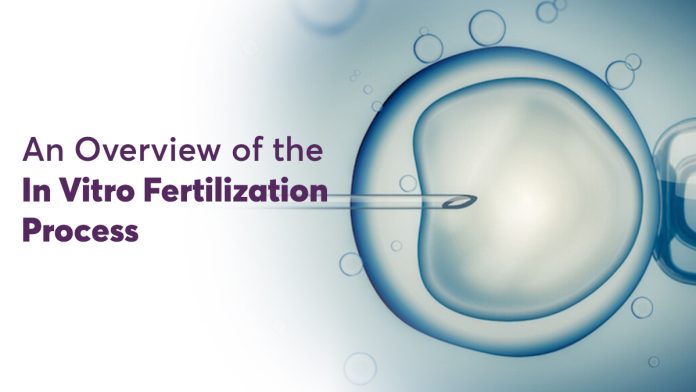In Vitro Fertilization (IVF) is an effective fertility process; it has turned dreams of parenthood into reality for countless couples. It is a fascinating and complex procedure that goes beyond just combining the egg and sperm in a lab. If you are curious about the intricacies of IVF, you are in the right place. In this blog, we will look at IVF procedure, from the initial consultation to pregnancy results.
Overview of the In Vitro Fertilization Process
Step 1: Consultation
The initial step is consultation with a fertility specialist. This is where you’ll find out whether IVF is the right treatment for you. In consultation, you can talk about your health history, any challenges you’ve faced with conception, and what you’re hoping to achieve with IVF. The fertility specialist will go over all the steps of the IVF procedure, answer your questions, and make sure you’re comfortable with everything before moving forward.
Step 2: Assessment
During an assessment, the female partner is required to take certain hormonal blood tests, while the male partner is asked to undergo basic semen analysis. As part of the IVF process, both partners have routine testing such as blood grouping, HIV, Hepatitis B and C, and blood tests to detect any existing sexually transmitted illnesses.
Step 3: Ovarian Stimulation Process
Ovarian stimulation is the next big step in the IVF process, which is categorised into short protocol and long protocol. The right protocol will be recommended to you by your fertility specialist. The duration of the long protocol treatment is for a month which is divided into 2 parts (Suppression Phase & Stimulation Phase).
Long protocol
In a long protocol, the female partner is required to visit the hospital for a daily subcutaneous injection, for around 15 days. Often beginning on day 22 of the cycle (day 1 being the first day of the menstrual period). After about 15 days, another series of injections is/are administered, which stimulates the ovaries to develop eggs. The daily dose might be increased or decreased based on how well the ovaries respond. Stimulation continues until the eggs have matured. This takes roughly 10 to 14 days.
Short Protocol
The short protocol normally takes 15-18 days, with injections and drugs given to the female partner on a daily basis. This continues until the eggs are developed.
Step 4: Egg Retrieval Process
When your eggs are ready (based on ultrasounds, tests, and doctor’s assessment), it’s time for the egg retrieval procedure. This is a minor surgical procedure done under sedation. Your doctor will use a thin needle, guided by ultrasound, to gently aspirate the eggs from your ovaries. It’s usually done through the vaginal wall, so no incisions are needed. Generally, majority of the follicles will carry a mature, healthy egg. However, not all follicles produce eggs, and some may be immature or decaying, making them unlikely to fertilize normally. It is extremely rare that no eggs are detected. If the treatment cannot progress because no eggs can be gathered or the egg quality is poor, the doctor will explore the likely causes with you and prescribe the best course of action.
Step 5: Fertilization Process
Fertilization is a process where all the magic happens, for the fertilization process your eggs are mixed with sperm to create embryos. Sometimes, if there are any specific fertility concerns, the sperm might be injected directly into the eggs using a technique called intracytoplasmic sperm injection. The embryos are monitored over the next few days to see which ones are developing well. This is a critical stage because the quality of the embryos can significantly impact the success of the IVF cycle.
Step 6: Embryo transfer Process
When the embryos are ready, it is time for the transfer. Your doctor will insert one or more embryos into your uterus via a tiny catheter. The patient may experience one cramp as an outside catheter is inserted through the cervix into the lower segment of the uterus; however, this is usually brief. The sonographer will visualise the uterine lining and guide the physician in placing the catheter. Once the embryos are properly positioned, they will be evacuated from the catheter and implanted into the uterus. You will be encouraged to rest for a brief period of time following the transfer.
Step 7: Pregnancy Results
About two weeks after the embryo transfer, you’ll be asked to take a pregnancy test to see if the procedure worked. If the test is positive, your doctor will likely schedule an ultrasound to check on the progress of the pregnancy. If the test is negative, don’t be disheartened. IVF can be a complex journey, and sometimes, it takes more than one cycle to achieve success. Your fertility clinic will work with you to review what happened and discuss the next steps.
Final Thoughts
IVF is a journey filled with hope, anticipation, and sometimes a bit of uncertainty. The steps involved might seem too invasive and extensive, but they are designed to give you the best chance of achieving your dream of having a baby. Whether you’re just starting out or have been through a few cycles, remember that you’re not alone. Many people have walked this path and found success. If you have any more questions or need some reassurance, don’t hesitate to reach out to your IVF centre for detailed guidance.


